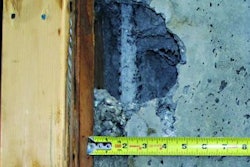SAN FRANCISCO -- A federal appeals court yesterday rejected a lawsuit from a homebuilders group that challenged the San Joaquin Valley Air Pollution Control District's attempt to regulate sprawl.
The district, which presides over some of the worst air quality in the nation, had attempted to regulate so-called "indirect sources" by making construction companies quantify emissions of a given project and build "air-friendly" offsets (such as parks or sidewalks) to mitigate their effect.
But the National Association of Home Builders filed suit against the regulators in June 2007, alleging the California agency was pre-empted by the federal Clean Air Act and acting outside its purview. The U.S. 9th Circuit Court of Appeals yesterday rejected that suit, agreeing with a federal district court ruling in Sept. 2008 that found the national law permits states to regulate certain aspects of land use related to air quality.
"We are gratified by this ruling," said Seyed Sadredin, the district's air pollution control officer and executive director. "We are eager to continue working with valley developers to clean up our air."
Earthjustice attorney Paul Cort, who was involved with the case, said the ruling should establish a precedent for other state efforts that would make construction companies compensate for indirect pollution, such as smog caused by traffic increases from large new developments.
"The court agreed that federal law gives states and local air agencies the power to address pollution caused by sprawl," Cort said. "This decision will ... empower other areas to follow suit."
The rule -- numbered 9510 and called "Indirect Source Review" -- requires developers of projects over certain sizes in the eight-county air basin to either pay a mitigation fee or incorporate into the blueprints elements that would cut down on construction- and traffic-related emissions. These might include building closer to public transit, bicycle lanes or making design plans more walkable.
The National Association of Home Builders did not return a call seeking comment.


















